Preface to the Third Edition
Contents
1 General Considerations
1.1 Introduction
1.2 General Concepts Related to Grids
1.2.1 Grid Cells
1.2.2 Requirements Imposed on Grids
1.2.3 Grid Classes
1.3 Methods for Grid Generation
1.3.1 Mapping Methods
1.3.2 Methods for Unstructured Grids
1.4 Big Codes
1.4.1 Interactive Systems
1.4.2 New Techniques
1.5 Comments
References
2 Coordinate Transformations
2.1 Introduction
2.2 General Notions and Relations
2.2.1 Jacobi Matrix
2.2.2 Tangential Vectors
2.2.3 Normal Vectors
2.2.4 Representation of Vectors Through the Base Vectors
2.2.5 Metric Tensors
2.2.6 Cross Product
2.3 Relations Concerning Second Derivatives
2.3.1 Christoffel Symbols
2.3.2 Differentiation of the Jacobian
2.3.3 Basic Identity
2.4 Conservation Laws
2.4.1 Scalar Conservation Laws
2.4.2 Vector Conservation Laws
2.5 Time-Dependent Transformations
2.5.1 Reformulation of Time-Dependent Transformations
2.5.2 Basic Relations
2.5.3 Equations in the Form of Scalar Conservation Laws
2.5.4 Equations in the Form of Vector Conservation Laws
2.6 Comments
References
3 Grid Quality Measures
3.1 Introduction
3.2 Curve Geometry
3.2.1 Basic Curve Vectors
3.2.2 Curvature
3.2.3 Torsion
3.3 Surface Geometry
3.3.1 Surface Base Vectors
3.3.2 Metric Tensors
3.3.3 Second Fundamental Form
3.3.4 Surface Curvatures
3.3.5 Curvatures of Discrete Surfaces
3.4 Metric-Tensor Invariants
3.4.1 Algebraic Expressions for the Invariants
3.4.2 Geometric Interpretation
3.5 Characteristics of Grid Lines
3.5.1 Sum of Squares of Cell Edge Lengths
3.5.2 Eccentricity
3.5.3 Curvature
3.5.4 Measure of Coordinate Line Torsion
3.6 Characteristics of Faces of Three-Dimensional Cells
3.6.1 Cell Face Skewness
3.6.2 Face Aspect-Ratio
3.6.3 Cell Face Area Squared
3.6.4 Cell Face Warping
3.7 Characteristics of Grid Cells
3.7.1 Cell Aspect-Ratio
3.7.2 Square of Cell Volume
3.7.3 Cell Area Squared
3.7.4 Cell Skewness
3.7.5 Characteristics of Nonorthogonality
3.7.6 Grid Density
3.7.7 Characteristics of Deviation from Conformality
3.7.8 Grid Eccentricity
3.7.9 Measures of Grid Warping and Grid Torsion
3.7.10 Quality Measures of Simplexes
3.8 Comments
References
4 Stretching Method
4.1 Introduction
4.2 Formulation of the Method
4.3 Theoretical Foundation
4.3.1 Model Problems
4.3.2 Basic Majorants
4.4 Basic Intermediate Transformations
4.4.1 Basic Local Stretching Functions
4.4.2 Basic Boundary Contraction Functions
4.4.3 Other Univariate Transformations
4.4.4 Construction of Basic Intermediate Transformations
4.4.5 Multidirectional Equidistribution
4.5 Comments
References
5 Algebraic Grid Generation
5.1 Introduction
5.2 Transfinite Interpolation
5.2.1 Unidirectional Interpolation
5.2.2 Tensor Product
5.2.3 Boolean Summation
5.3 Algebraic Coordinate Transformations
5.3.1 Formulation of Algebraic Coordinate Transformation
5.3.2 General Algebraic Transformations
5.4 Lagrange and Hermite Interpolations
5.4.1 Coordinate Transformations Based on Lagrange Interpolation
5.4.2 Transformations Based on Hermite Interpolation
5.5 Control Techniques
5.6 Transfinite Interpolation from Triangles and Tetrahedrons
5.7 Drag and Sweeping Methods
5.8 Comments
References
6 Grid Generation Through Differential Systems
6.1 Introduction
6.2 Elliptic Equations
6.2.1 Laplace Systems
6.2.2 Poisson Systems
6.2.3 Other Elliptic Equations
6.3 Biharmonic Equations
6.3.1 Formulation of the Approach
6.3.2 Transformed Equations
6.4 Orthogonal Systems
6.4.1 Derivation from the Condition of Orthogonality
6.4.2 Multidimensional Equations
6.5 Hyperbolic and Parabolic Systems
6.5.1 Specification of Aspect Ratio
6.5.2 Specification of Jacobian
6.5.3 Parabolic Equations
6.5.4 Hybrid Grid Generation Scheme
6.6 Grid Equations for Nonstationary Problems
6.6.1 Method of Lines
6.6.2 Moving-Grid Techniques
6.6.3 Time-Dependent Deformation Method
6.7 Comments
References
7 Variational Methods
7.1 Introduction
7.2 Calculus of Variations
7.2.1 General Formulation
7.2.2 Euler--Lagrange Equations
7.2.3 Convexity Condition
7.2.4 Functionals Dependent on Metric Elements
7.2.5 Functionals Dependent on Tensor Invariants
7.3 Integral Grid Characteristics
7.3.1 Dimensionless Functionals
7.3.2 Dimensionally Heterogeneous Functionals
7.3.3 Functionals Dependent on Second Derivatives
7.4 Adaptation Functionals
7.4.1 One-Dimensional Functionals
7.4.2 Multidimensional Approaches
7.5 Functionals of Attraction
7.5.1 Lagrangian Coordinates
7.5.2 Attraction to a Vector Field
7.5.3 Jacobian-Weighted Functional
7.6 Energy Functionals of Harmonic Function Theory
7.6.1 General Formulation of Harmonic Maps
7.6.2 Application to Grid Generation
7.6.3 Relation to Other Functionals
7.7 Combinations of Functionals
7.7.1 Natural Boundary Conditions
7.8 Comments
References
8 Curve and Surface Grid Methods
8.1 Introduction
8.2 Grids on Curves
8.2.1 Formulation of Grids on Curves
8.2.2 Grid Methods
8.3 Formulation of Surface Grid Methods
8.3.1 Mapping Approach
8.3.2 Associated Metric Relations
8.4 Beltramian System
8.4.1 Beltramian Operator
8.4.2 Surface Grid System
8.5 Interpretations of the Beltramian System
8.5.1 Variational Formulation
8.5.2 Harmonic-Mapping Interpretation
8.5.3 Formulation Through Invariants
8.5.4 Formulation Through the Surface Christoffel Symbols
8.6 Control of Surface Grids
8.6.1 Control Functions
8.6.2 Monitor Approach
8.6.3 Control Through Variational Methods
8.6.4 Orthogonal Grid Generation
8.7 Hyperbolic Method
8.7.1 Hyperbolic Governing Equations
8.8 Comments
References
9 Comprehensive Method
9.1 Introduction
9.2 Hypersurface Geometry and Grid Formulation
9.2.1 Hypersurface Grid Formulation
9.2.2 Monitor Hypersurfaces
9.2.3 Metric Tensors
9.2.4 Relations Between Metric Elements
9.2.5 Christoffel Symbols
9.3 Functional of Smoothness
9.3.1 Formulation of the Functional
9.3.2 Geometric Interpretation
9.3.3 Euler--Lagrange Equations
9.3.4 Equivalent Forms
9.3.5 Inverted Beltrami Equations
9.4 Role of the Mean Curvature
9.4.1 Mean Curvature and Inverted Beltrami Grid Equations
9.4.2 Mean Curvature and Rate of Grid Clustering
9.4.3 Diffusion Functional
9.4.4 Dimensionless Functionals
9.5 Formulation of Comprehensive Grid Generator
9.5.1 Formulation of Control Metrics
9.5.2 Energy and Diffusion Functionals
9.5.3 Beltrami and Diffusion Equations
9.5.4 Inverted Beltrami and Diffusion Equations
9.5.5 Specification of Individual Control Metrics
9.5.6 Control Metrics for Generating Grids with Balanced Properties
9.6 Comments
References
10 Numerical Implementations of Comprehensive Grid Generators
10.1 One-Dimensional Equation
10.1.1 Numerical Algorithm
10.2 Multidimensional Finite Difference Algorithms
10.2.1 Parabolic Simulation
10.2.2 Two-Dimensional Equations
10.2.3 Three--Dimensional Problem
10.3 Spectral Element Algorithm
10.4 Finite Element Method
10.5 Inverse Matrix Method
10.6 Method of Minimization of Energy Functional
10.6.1 Generation of Fixed Grids
10.6.2 Adaptive Grid Generation
10.7 Parallel Mesh Generation
References
11 Control of Grid Properties
11.1 Grid Adaptation to Function Values
11.1.1 Control Operator
11.1.2 Grid Equations
11.2 Grid Generation with Node Clustering Near Isolated Points
11.3 Grids with Node Clustering Near Curves and Surfaces
11.4 Generation of Grids with Node Clustering in the Zones
11.4.1 Control Metric of a Monitor Surface
11.4.2 Spherical Control Metric
11.5 Application of Layer-Type Functions to Grid Codes
11.5.1 Specification of Basic Functions
11.5.2 Numerical Grids Aligned to Vector-Fields
11.5.3 Application to Grid Clustering
11.6 Generation of Multi-block Smooth Grids
11.6.1 Approaches to Smoothing Grids
11.6.2 Computation by Interpolation
References
12 Unstructured Methods
12.1 Introduction
12.2 Methods Based on the Delaunay Criterion
12.2.1 Dirichlet Tessellation
12.2.2 Incremental Techniques
12.2.3 Approaches for Insertion of New Points
12.2.4 Two-Dimensional Approaches
12.2.5 Constrained Form of Delaunay Triangulation
12.2.6 Point Insertion Strategies
12.2.7 Surface Delaunay Triangulation
12.2.8 Three-Dimensional Delaunay Triangulation
12.3 Advancing-Front Methods
12.3.1 Procedure of Advancing-Front Method
12.3.2 Strategies for Selecting Out-of-Front Vertices
12.3.3 Grid Adaptation
12.3.4 Advancing-Front Delaunay Triangulation
12.4 Meshing by Quadtree-Octree Decomposition
12.5 Three-Dimensional Prismatic Grid Generation
12.6 Comments
References
13 Applications of Adaptive Grids to Solution of Problems
13.1 Application to Unsteady Gas Dynamics Problems
13.1.1 Numerical Examples
13.2 Applications to Numerical Simulations of Tsunami Run-Up
13.2.1 Mathematical Model
13.2.2 Dynamically Adaptive Numerical Grid
13.2.3 Equations in Dynamic Curvilinear Coordinates
13.2.4 Numerical Algorithm
13.2.5 Some Results of Calculations
13.3 Application to Singularly-Perturbed Equations
13.3.1 Numerical Algorithm
13.4 Problem of Heat Transfer in Plasmas
13.4.1 The Tokamak Edge Region
13.4.2 Computations on Balanced Grids
13.5 Evaluations of Temperature-Profile Discrepancies
13.5.1 Mathematical Model for the Interaction of Heat Wave with Thermocouple
13.5.2 Generation of Adaptive Grid
13.5.3 Results of Numerical Experiments
13.6 Numerical Modeling of Nanopore Formation in Aluminium Oxide Films
13.6.1 Introduction
13.6.2 Mathematical Model
13.6.3 Numerical Approximation
13.6.4 Grid Generation
13.6.5 Numerical Experiments
13.7 Grids for Boundary Immersing Methods
13.7.1 Introduction
13.7.2 Formulation of the Method
13.7.3 Determination of Boundary Cells
13.7.4 Algorithm for Determining Interior Cells
13.7.5 Mesh Adaptation
References
Index
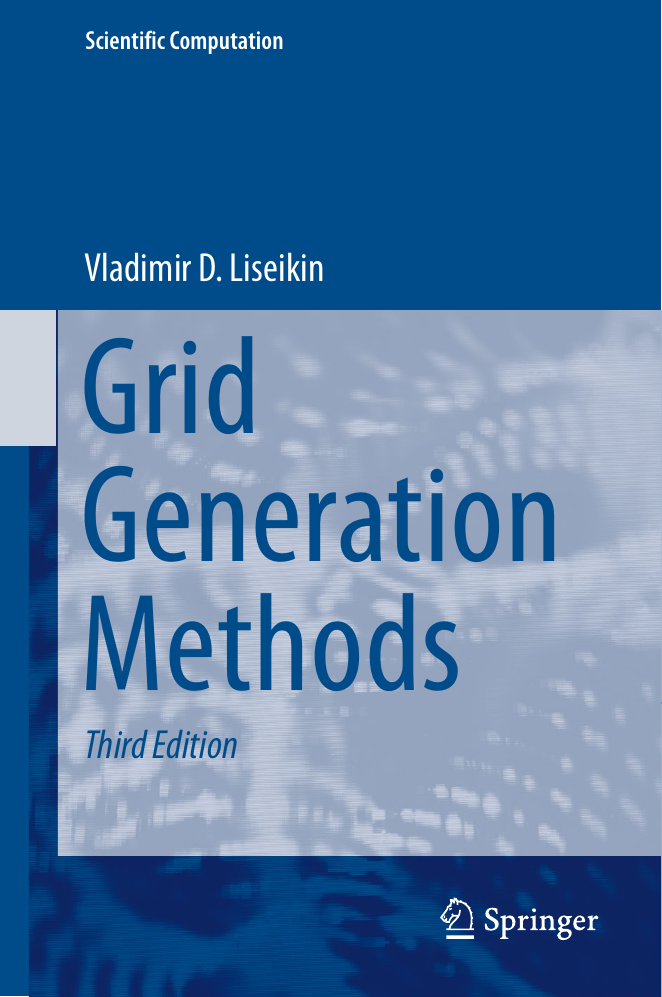

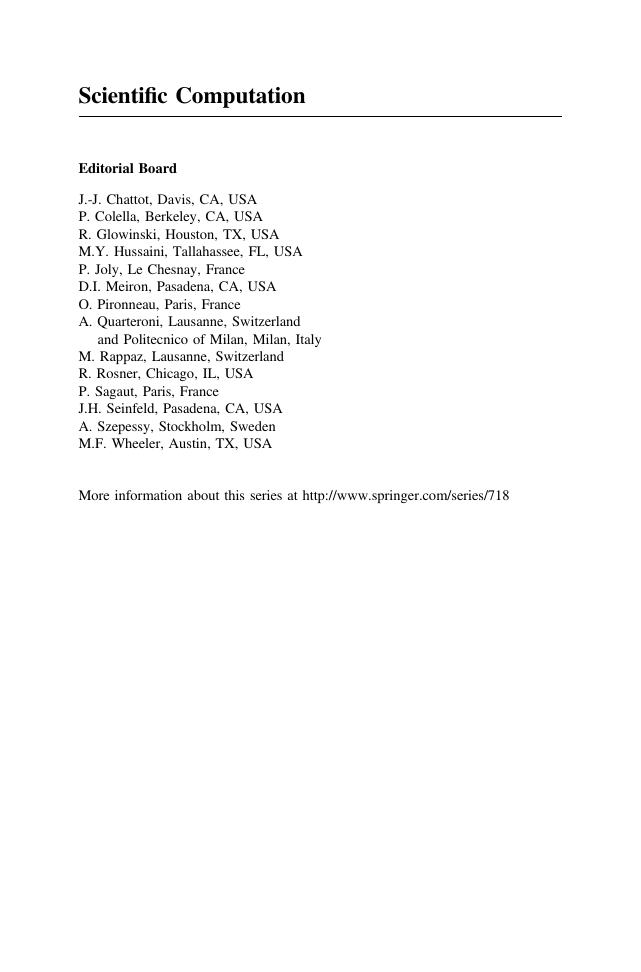
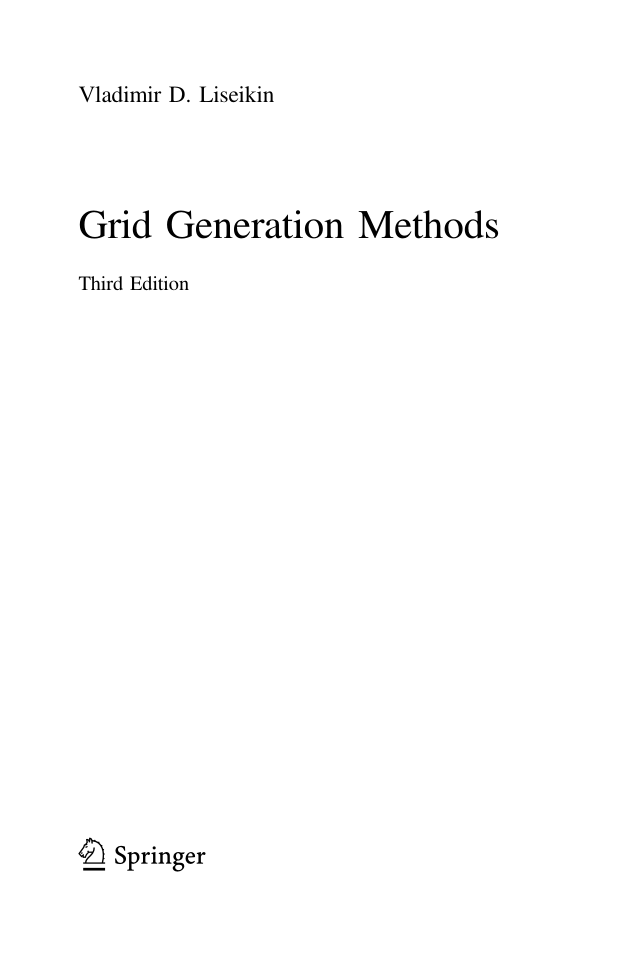
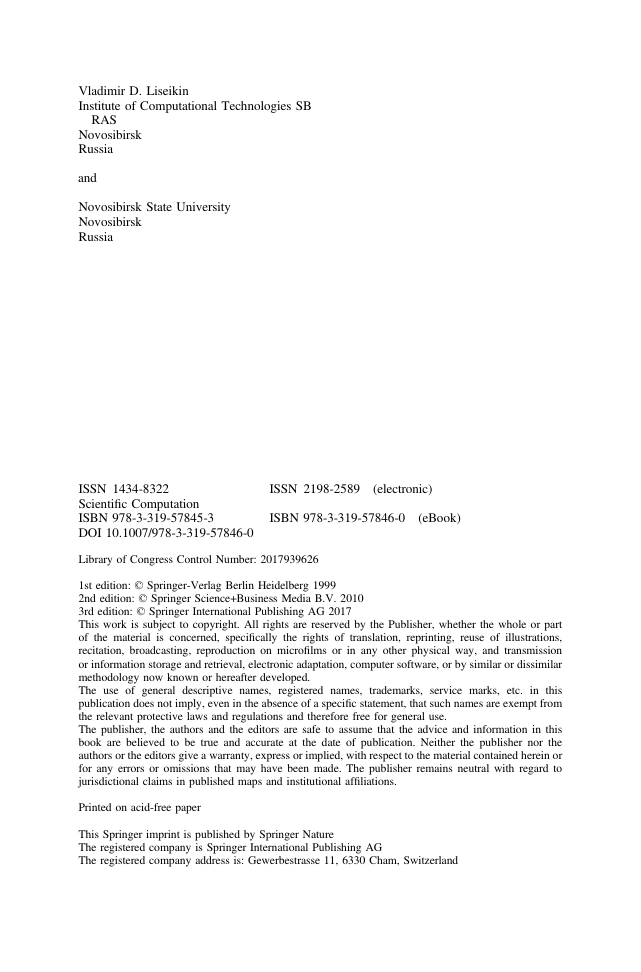
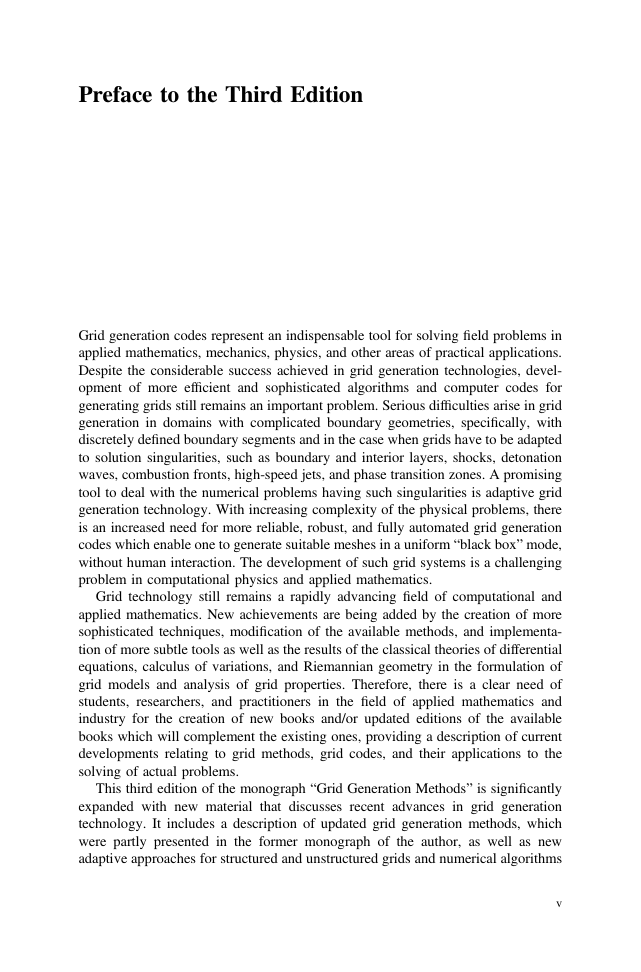
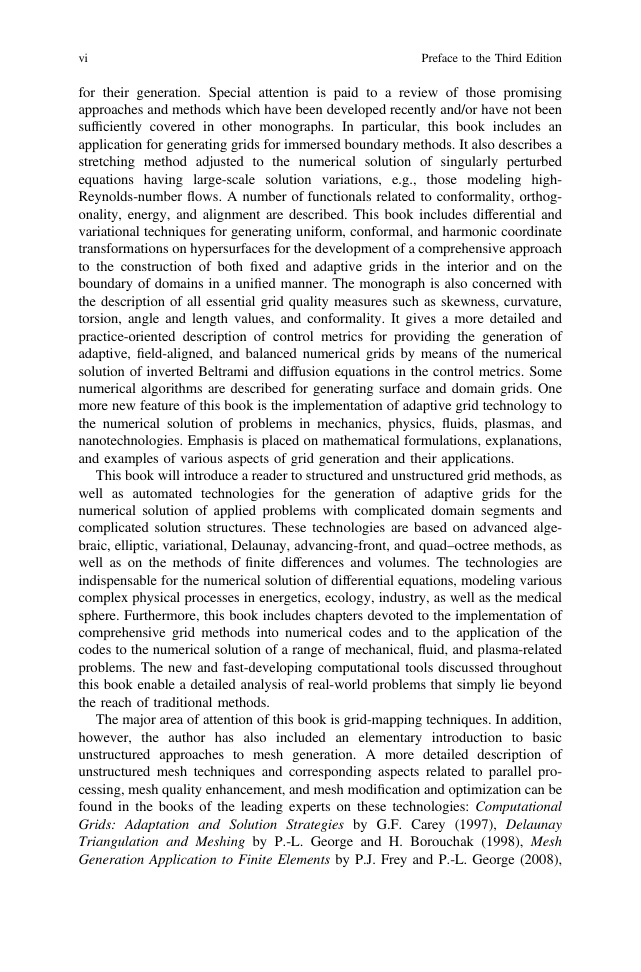
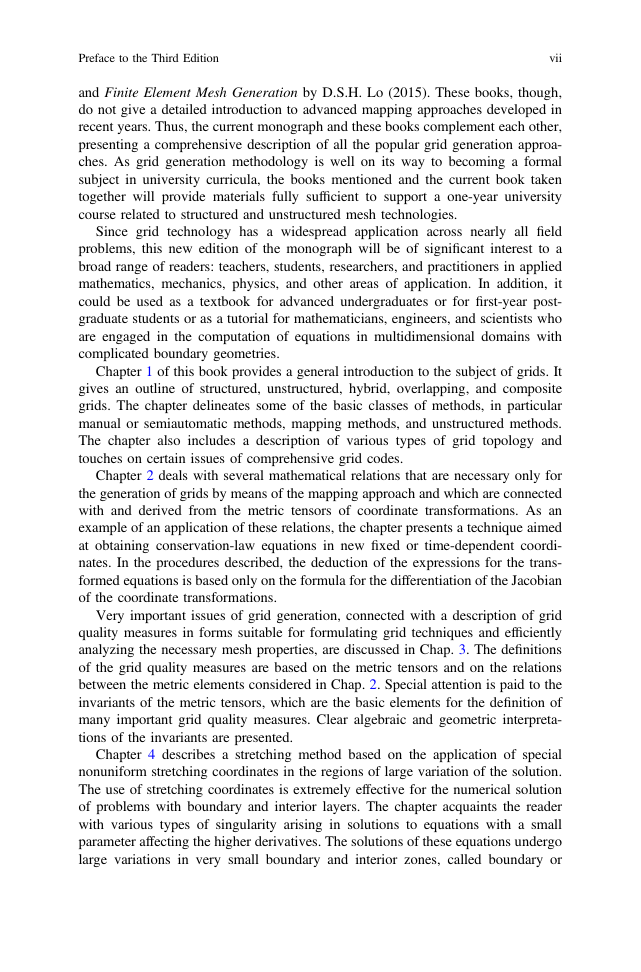








 2023年江西萍乡中考道德与法治真题及答案.doc
2023年江西萍乡中考道德与法治真题及答案.doc 2012年重庆南川中考生物真题及答案.doc
2012年重庆南川中考生物真题及答案.doc 2013年江西师范大学地理学综合及文艺理论基础考研真题.doc
2013年江西师范大学地理学综合及文艺理论基础考研真题.doc 2020年四川甘孜小升初语文真题及答案I卷.doc
2020年四川甘孜小升初语文真题及答案I卷.doc 2020年注册岩土工程师专业基础考试真题及答案.doc
2020年注册岩土工程师专业基础考试真题及答案.doc 2023-2024学年福建省厦门市九年级上学期数学月考试题及答案.doc
2023-2024学年福建省厦门市九年级上学期数学月考试题及答案.doc 2021-2022学年辽宁省沈阳市大东区九年级上学期语文期末试题及答案.doc
2021-2022学年辽宁省沈阳市大东区九年级上学期语文期末试题及答案.doc 2022-2023学年北京东城区初三第一学期物理期末试卷及答案.doc
2022-2023学年北京东城区初三第一学期物理期末试卷及答案.doc 2018上半年江西教师资格初中地理学科知识与教学能力真题及答案.doc
2018上半年江西教师资格初中地理学科知识与教学能力真题及答案.doc 2012年河北国家公务员申论考试真题及答案-省级.doc
2012年河北国家公务员申论考试真题及答案-省级.doc 2020-2021学年江苏省扬州市江都区邵樊片九年级上学期数学第一次质量检测试题及答案.doc
2020-2021学年江苏省扬州市江都区邵樊片九年级上学期数学第一次质量检测试题及答案.doc 2022下半年黑龙江教师资格证中学综合素质真题及答案.doc
2022下半年黑龙江教师资格证中学综合素质真题及答案.doc